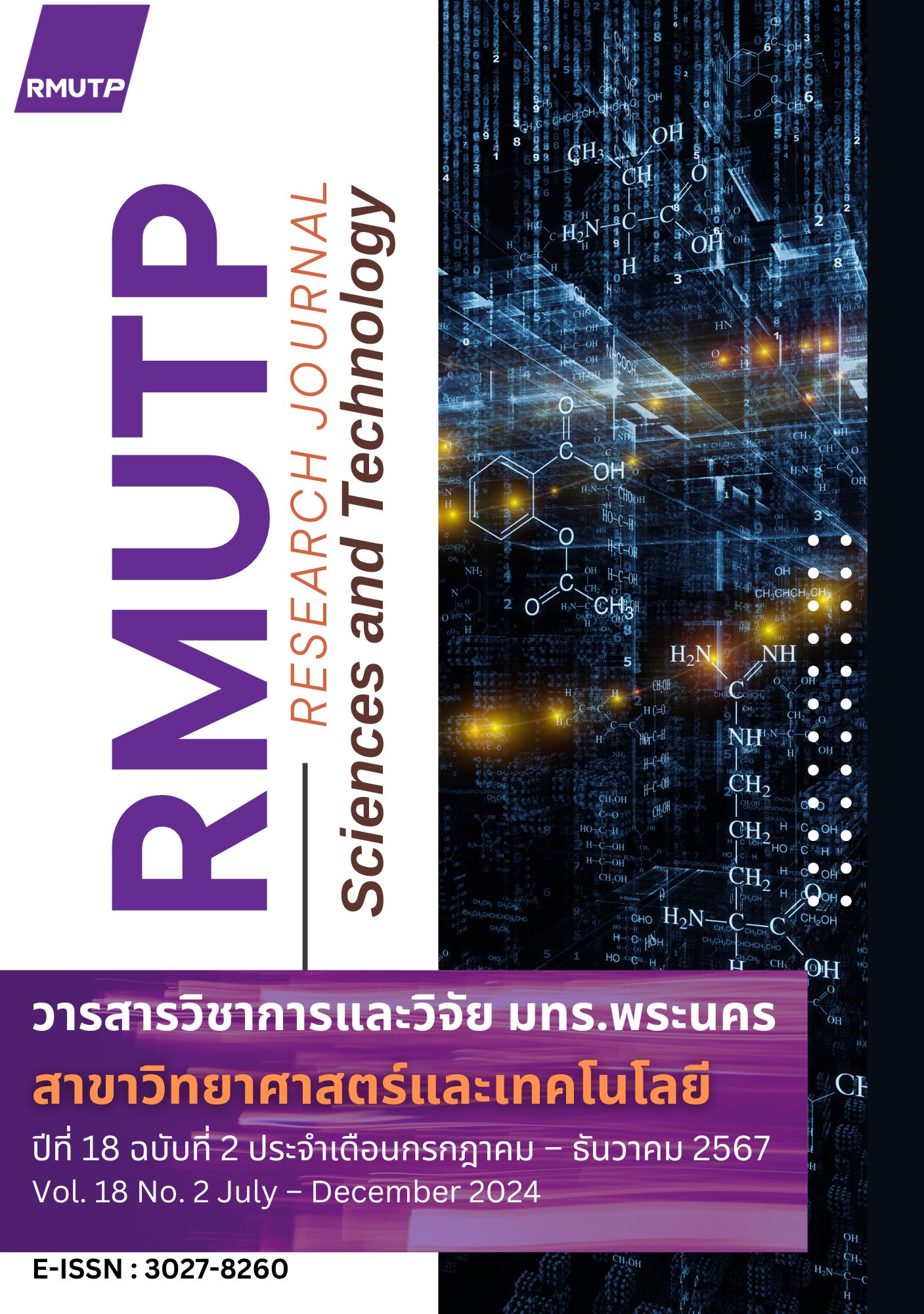Parameter optimization of Artificial Bee Colony Algorithm with Response Surface Methodology
Main Article Content
Abstract
The Artificial Bee Colony Algorithm is one of the metaheuristic with excellent performance and simple implementation. But it is well known that a metaheuristic approach is required to optimize the algorithm's parameters. Therefore, this research aims to use the response surface methodology for analyze the optimal level parameters of the artificial bee colony algorithm for continuous variable benchmark problems. To carry out this research, a 3K factorial experimental design was used, with the design parameters consisting of iteration, number of population, and limit. After that, the experimental table was used to collect data, and the data obtained from the experiments was analyzed by the response surface methodology. From the results of the data analysis, it was found that the main effects resulting from the level change of the three parameters, the interaction effect of the bee population and the limit, and the quadratic model were statistically significant at 0.05 (P-value <0.05). The final step was to run the regression model for finding the parameters that resulted in the best answer. The results of the regression model analysis revealed that the optimum parameters of the Artificial Bee Colony Algorithm to solve continuous variable mathematics functions should be set at iteration, bee population, and limits of 900, 40 and 90, respectively.
Article Details

This work is licensed under a Creative Commons Attribution-NonCommercial-NoDerivatives 4.0 International License.
ลิขสิทธ์ ของมหาวิทยาลัยเทคโนโลยีราชมงคลพระนครReferences
P. Deift and X. Zhou, “A steepest descent method for oscillatory Riemann-Hilbert problems,” Asymptotics for the MKdV equation. Annals of Mathematics, vol. 137(2), pp. 295-368, 1993.
D. Goldfarb and J. K. Reid, “A practicable steepest-edge simplex algorithm,” Mathematical Programming, vol. 12(1), pp. 361-371, 1977.
L. Qi and J. Sun, “A nonsmooth version of Newton's method,” Mathematical programming, vol. 58(1), pp. 353-367, 1993.
M. J. Best, “A feasible conjugate-direction method to solve linearly constrained minimization problems,” Journal of Optimization Theory and Applications, vol. 16(1), pp. 25-38, 1975.
H. Rao, X. Shi, A. K. Rodrigue, J. Feng, Y. Xia, M. Elhoseny and L. Gu, “Feature selection based on artificial bee colony and gradient boosting decision tree,” Applied Soft Computing, vol. 74, pp. 634-642, 2019.
W. Chen, M. Panahi, P. Tsangaratos, H. Shahabi, I. Ilia, S. Panahi, and B. B. Ahmad, “Applying population-based evolutionary algorithms and a neuro-fuzzy system for modeling landslide susceptibility,” Catena, vol. 172, pp. 212-231, 2019.
Y. Xue, B. Xue and M. Zhang, “Self-adaptive particle swarm optimization for large-scale feature selection in classification,” ACM Transactions on Knowledge Discovery from Data (TKDD), vol. 13(5), pp. 1-27, 2019.
Q. Yang, W. N. Chen, T. Gu, H. Jin, W. Mao and J. Zhang, “An adaptive stochastic dominant learning swarm optimizer for high-dimensional optimization,” IEEE Transactions on Cybernetics, 2020.
J. Yang, C. Jiangtao and Y. D. Zhang, “Artificial bee colony algorithm with adaptive covariance matrix for hearing loss detection,” Knowledge-Based Systems, vol. 216, pp. 1-28, 2021.
Y. Xinjie and G. Mitsuo, “Introduction to Evolutionary Algorithms,” Springer Science & Business Media, 2010.
A. Khadwilard, “Application of Genetic Algorithm for Optimization Problems”, RMUTP Sci J, vol. 5, no. 2, pp. 153-163, 2011.
R. Storn and K. V. Price, “Differential Evolution–A Simple and Efficient Heuristic for global Optimization over Continuous Spaces,” Journal of Global Optimization, vol. 11, pp. 341-359, 1997.
M. Dorigo, M. Birattari and T. Stutzle, “Ant colony optimization,” IEEE Computational Intelligence Magazine, vol. 1(4), pp. 28-39, 2006.
R. C. Eberhart, Y. Shi and J. Kennedy, “Swarm intelligence,” Elsevier, 2001.
D. Karaboga, “An idea based on honey bee swarm for numerical optimization,” Technical report-tr06, Erciyes University, engineering faculty, computer engineering department, vol. 200, pp. 1-10, 2005.
H. Eskandar, A. Sadollah, A. Bahreininejad and M. Hamdi, “Water cycle algorithm–A novel metaheuristic optimization method for solving constrained engineering optimization problems,” Computers & Structures, vol. 110, pp. 151-166, 2012.
E. Rashedi, H. Nezamabadi-Pour and S. Saryazdi, “GSA: a gravitational search algorithm,” Information sciences, vol. 179(13), pp. 2232-2248, 2009.
N. Siddique and H. Adeli, “Nature-inspired chemical reaction optimization algorithms, Cognitive computation, vol. 9(4), pp. 411-422, 2017.
B. Akay and D. Karaboga, “Parameter Tuning for the Artificial Bee Colony Algorithm,” Computational Collective Intelligence, pp. 608-619, 2009.
Y. S. Qi, T. K. Wen, S. Rui, D. Gan, Z. A. Abdul Salam, “Parameter tuning for artificial Bee Colony algorithm,” Journal of Applied Technology and Innovation, vol. 5, no. 1, pp. 11-14, 2021.
G. E. P. Box and K. B. Wilson, “On the experimental attainment of optimum conditions,” Journal of the Royal Statistical Society B, vol. 13, pp. 1–45, 1951.
D. C. Montgomery, Design and analysis of experiments, New York: John Wiley and Sons, 2001.


